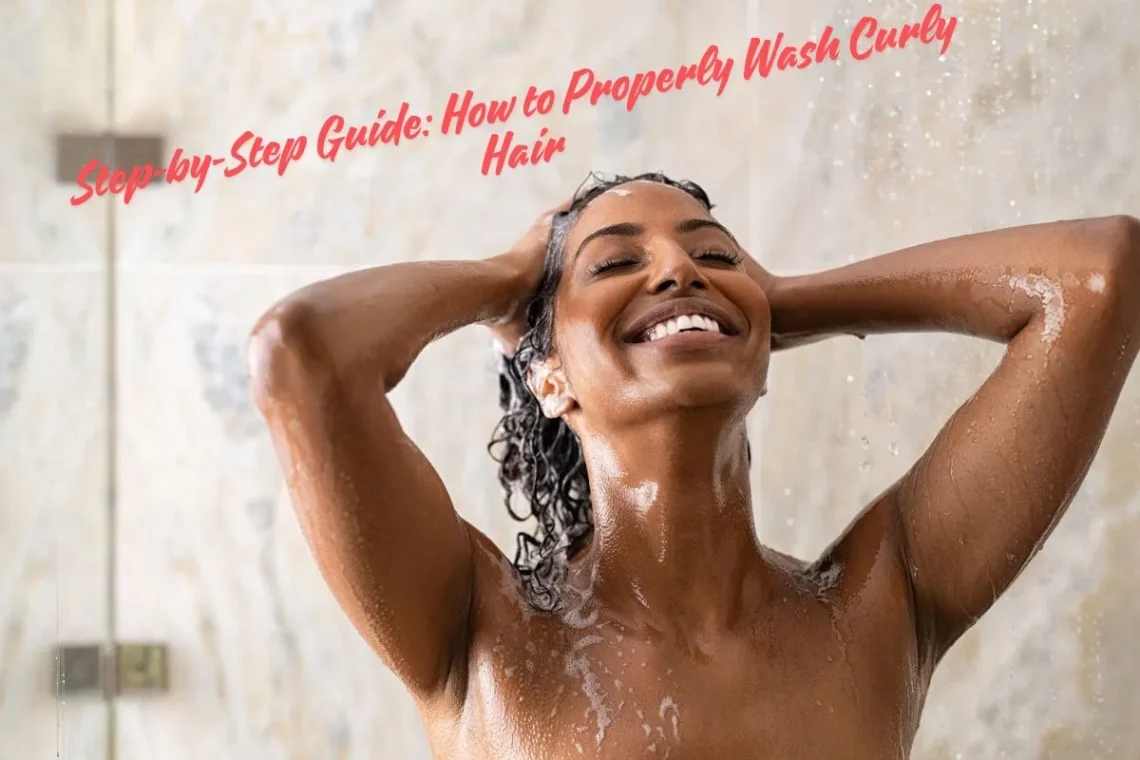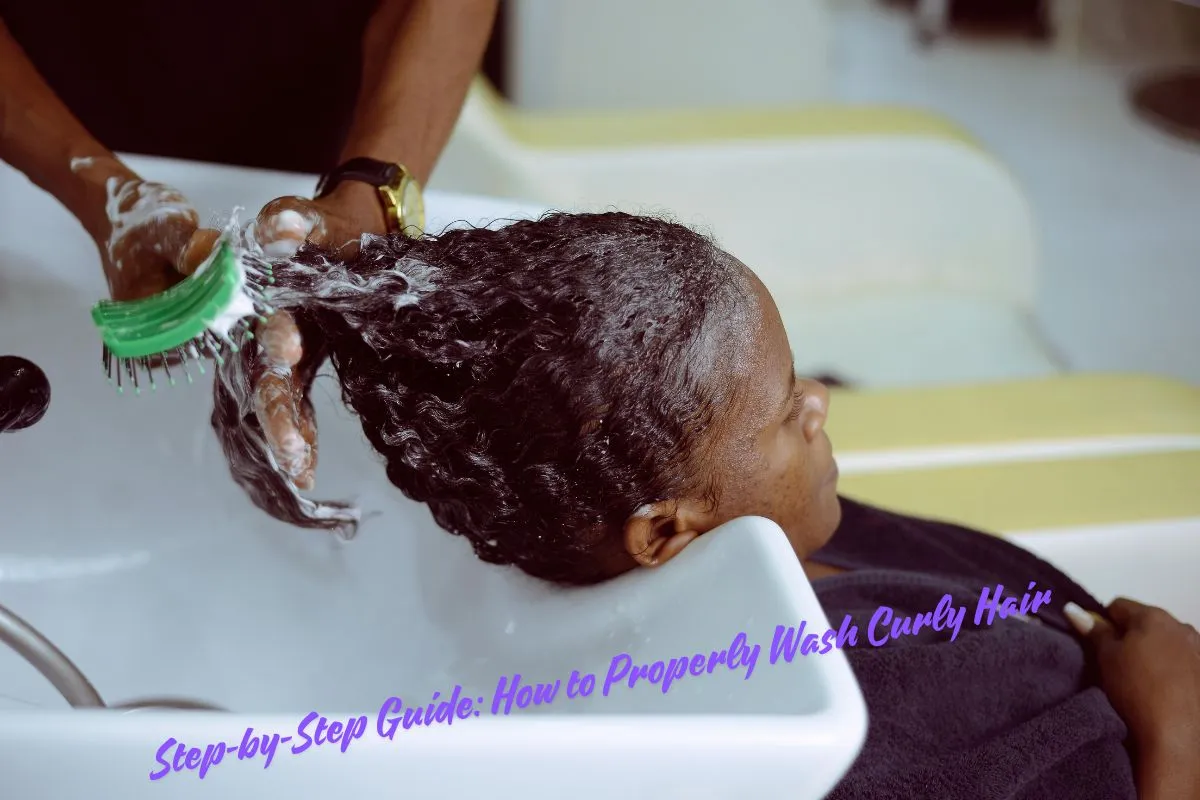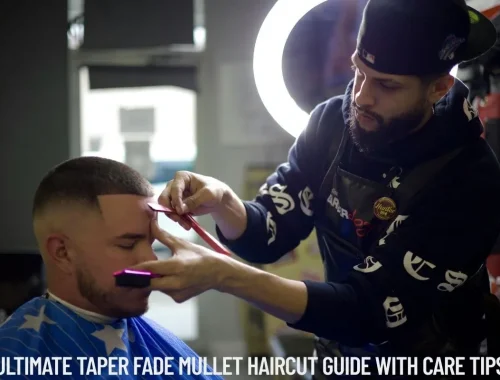
Step-by-Step Guide: How to Properly Wash Curly Hair
Curly hair is beautiful, bold, and full of personality—but it also requires a bit more TLC than straight or wavy hair. Properly washing curly hair isn’t just about keeping it clean—it’s about nourishing your strands, preserving curl definition, and maintaining moisture balance. In this step-by-step guide, we’ll explain everything you need to know about properly washing curly hair for healthy, hydrated, and defined curls.
Let’s explore the ideal wash day routine using expert-approved methods, product tips, and ingredients that cater specifically to your curl type and texture.
Table of Contents
ToggleStep 1: Pre-Wash Prep with a Pre-Poo Treatment
Before you reach for the shampoo, start with a pre-poo treatment for curly hair. This step protects your strands from drying out during the cleansing process. You can use a natural oil like coconut or argan oil, or a deep conditioner as a pre-treatment.
💡 Why it matters: Curly hair tends to be dry due to its shape, which makes it difficult for natural oils to travel down the shaft. Pre-pooing helps with moisture retention and reduces breakage when detangling.
Step 2: Gently Detangle Before Washing
Using your fingers or a wide-tooth comb, gently detangle curly hair before you shampoo. This removes shed hair and reduces the chance of forming knots during washing. Applying conditioner or oil while detangling makes the process smoother.
💡 Pro tip: Always detangle from the ends and work your way up to the roots. It’s gentler on your strands and helps maintain your curl pattern.

Step 3: Saturate Hair with Lukewarm Water
Wet your hair thoroughly using lukewarm water. This temperature is perfect for opening the cuticles just enough to allow product penetration without stripping the hair’s natural oils.
💡 Why lukewarm? Hot water can dry out your curls and cause frizz, while cold water won’t open the cuticle enough for a proper cleanse.
Step 4: Use a Sulfate-Free Shampoo on the Scalp
Choose a sulfate-free shampoo for curls to cleanse your scalp without removing too much moisture. Sulfates can be harsh and strip natural oils, which are essential for curly hair health.
🧴 Massage the shampoo into your scalp using your fingertips (not nails!) to boost circulation and dislodge product buildup.
💡 If you follow the co-washing curly hair method (washing with conditioner only), alternate with shampooing every few weeks using a clarifying, gentle product.
Step 5: Rinse and Squeeze Excess Water
After cleansing, thoroughly rinse out the shampoo and gently squeeze excess water from your curls. Don’t rub with a towel—this can roughen the cuticle and lead to frizz.
💡 Tip: Use a microfiber towel or cotton T-shirt to pat dry your hair gently. This technique is ideal for hair cuticle care and reduces friction.
Step 6: Apply Conditioner for Hydration & Slip
Apply conditioner generously to your strands, focusing on the mid-lengths and ends. This step is crucial for hydrating curly hair and maintaining hair elasticity.
Look for conditioners that cater to cool-toned vs. warm-toned curly hair, depending on your natural shade and undertones. If you color your hair, choose products designed to preserve fashion hair colors like violet or pastel shades.
Step 7: Detangle with Conditioner In
While your hair is soaked with conditioner, it’s the best time to detangle. Use your fingers or a wide-tooth comb to work through any tangles. Conditioner offers the slip needed to prevent breakage during this process.
💡 Pro tip: Focus on gentle cleansing and avoid tugging or rushing. Your curls will thank you!
Step 8: Let Conditioner Sit for a Few Minutes
Leave the conditioner in for 3–5 minutes to allow your hair to soak up all the goodness. If you have high-porosity hair or need extra moisture, use this time to apply a deep conditioning treatment for curly hair once a week.

Step 9: Rinse with Cool Water
Rinse your hair using cool water to help seal the cuticle, enhance shine, and lock in moisture. This step improves the long-lasting hair color effect and helps define curl structure.
Step 10: Apply Leave-In Conditioner
Once rinsed, lightly towel-dry your curls and apply a leave-in conditioner for curly hair while your hair is still damp. Leave-ins provide added hydration and reduce hair dye fade rate, especially important if you have pastel purple hair color ideas or use semi-permanent dyes.
Step 11: Style While Wet for Curl Definition
Apply styling products like curl cream, mousse, or gel. Use techniques such as scrunching, finger-coiling, or the plopping method for curls to enhance your natural curl pattern.
💡 Want more volume? Flip your head upside down while applying the product.
Step 12: Dry Using Gentle Techniques
Avoid heat tools unless using a diffuser on a cool setting. Letting your curls air-dry naturally or using a diffuser with minimal disturbance preserves the soft pastel hue and hair color depth if your curls are dyed.
Bonus Tips for Maintaining Curly Hair
🌀 How Often Should You Wash Curly Hair?
-
Typically, 1–2 times per week is ideal to avoid stripping oils and drying out your curls.
-
Over-washing can disrupt natural hair color undertone and damage your strands.
🌀 Best Shampoo for Curly Hair
-
Look for sulfate-free formulas enriched with nourishing ingredients like aloe vera, jojoba oil, or honey.
-
Avoid alcohol-based products as they can dehydrate curls.
🌀 Vibrant Purple Hair Color Maintenance
-
Use color-safe products if you dye your curls.
-
Incorporate long-lasting purple hair dye tips like cool rinses and minimal heat exposure.
Final Thoughts
Learning how to properly wash curly hair is all about consistency, patience, and the right products. From hydration and scalp health to curl definition and protection from product buildup, every step in your wash day routine contributes to overall curl health.
Whether you’re maintaining your natural texture or experimenting with bold hair color choices like lavender, pastel, or deep violet, a proper cleansing routine will help your curls thrive.
Embrace your curl journey—wash day doesn’t have to be a hassle. With the right routine, it can become a nourishing ritual that your curls will look forward to.
You May Also Like

Ultimate Taper Fade Mullet Haircut Guide with Care Tips
August 19, 2025
The Fluffy Edgar Haircut: Styling and Shape
September 4, 2025

